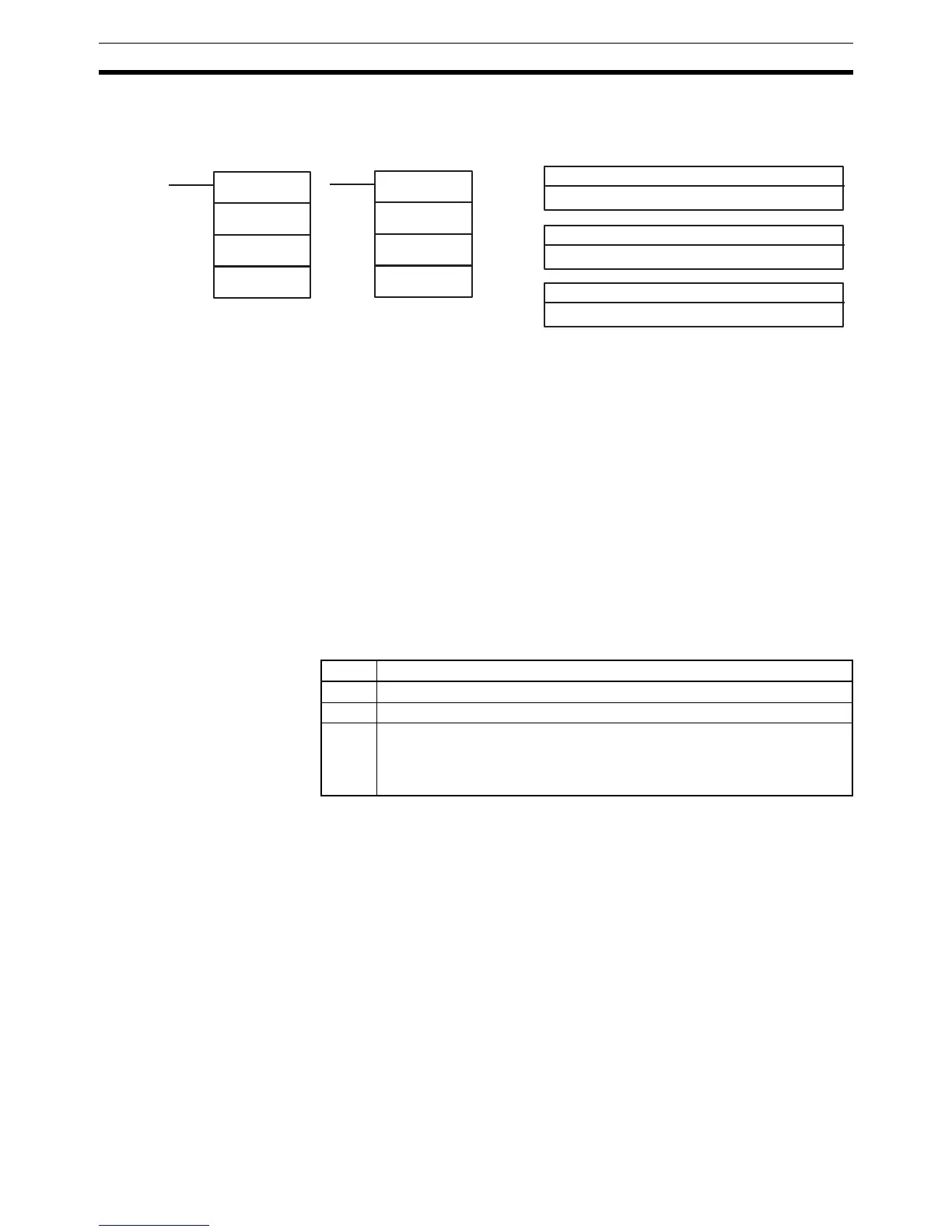338
Special Instructions Section 5-26
5-26-10SPEED OUTPUT– SPED(64)
Limitations This instruction is available in the CPM1A with transistor outputs and
CQM1 only.
F must be BCD, #0000 to #5000 when a port is specified, #0000 or #0002 to
#0100 when an output bit is specified.
DM 6144 to DM 6655 cannot be used for F.
Description SPED(64) is used to set, change, or stop pulse output from the specified port
or output bit. When the execution condition is OFF, SPED(64) is not executed.
When the execution condition is ON, SPED(64) sets the pulse frequency F for
the port or output bit specified by P. M determines the output mode.
Since SPED(64) has a relatively long execution time, the cycle time can be
reduced by executing the differentiated version (@SPED(64)) of this instruc-
tion only when it is needed.
Note Refer to 1-3 Pulse Output Function (CQM1 Only) for more details.
Port Specifier (P) The port specifier specifies the port or output bit where the pulses will be out-
put.
Output Mode (M) The value of M determines the output mode. A value of 000 indicates inde-
pendent mode and a value of 001 indicates continuous mode.
In independent mode, the pulse output will continue until one of the following
occurs:
1,2,3... 1. The number of pulses specified by the PULS(65) instruction is reached.
(Execute PULS(65) before SPED(64) when specifying independent
mode.)
2. The INI(61) instruction is executed with C=003.
3. SPED(64) is executed again with the output frequency, F, set to 000.
When outputting pulses in independent mode, specify the number of pulses
beforehand by executing PULS(65). When outputting from port 1 or 2, specify
the direction (CW or CCW) as well.
P: Port specifier
001, 002, or 010 to 150
Ladder Symbols
Operand Data Areas
@SPED(64)
P
M
F
F: Pulse frequency
IR, SR, AR, DM, HR, LR, #
M: Output mode
000 or 001
SPED(64)
P
M
F
P Pulse output location
001 Port 1
002 Port 2
000 to
150
Output bits IR 10000 to IR 10015.
The first two digits of P specify which bit of IR 100 is the output bit and the
third digit of P is always set to 0. For example, P=000 specifies IR 10000,
P=010 specifies IR 10001, ... and P=150 specifies bit IR 10015.
